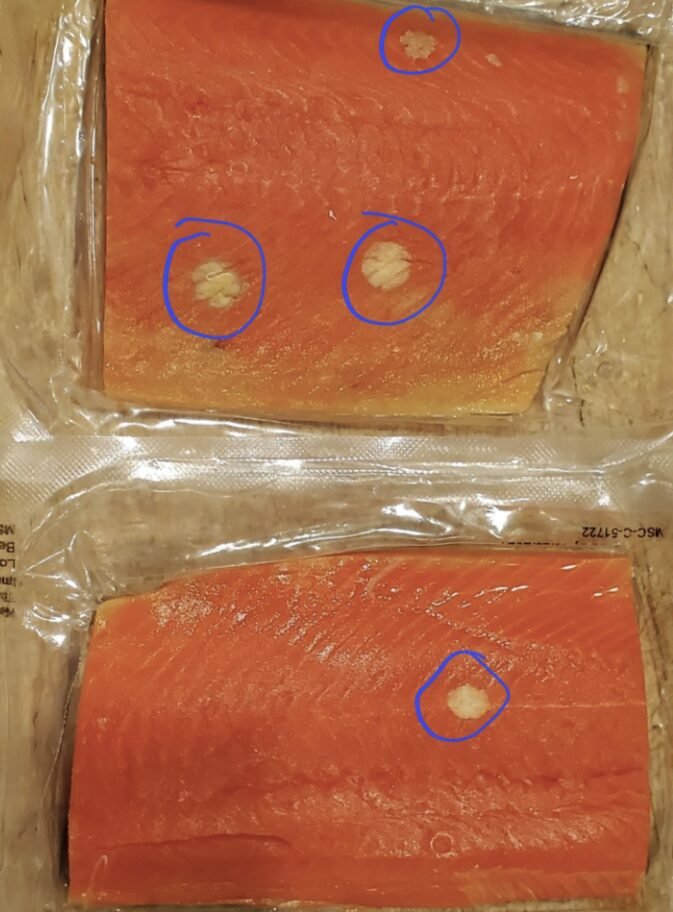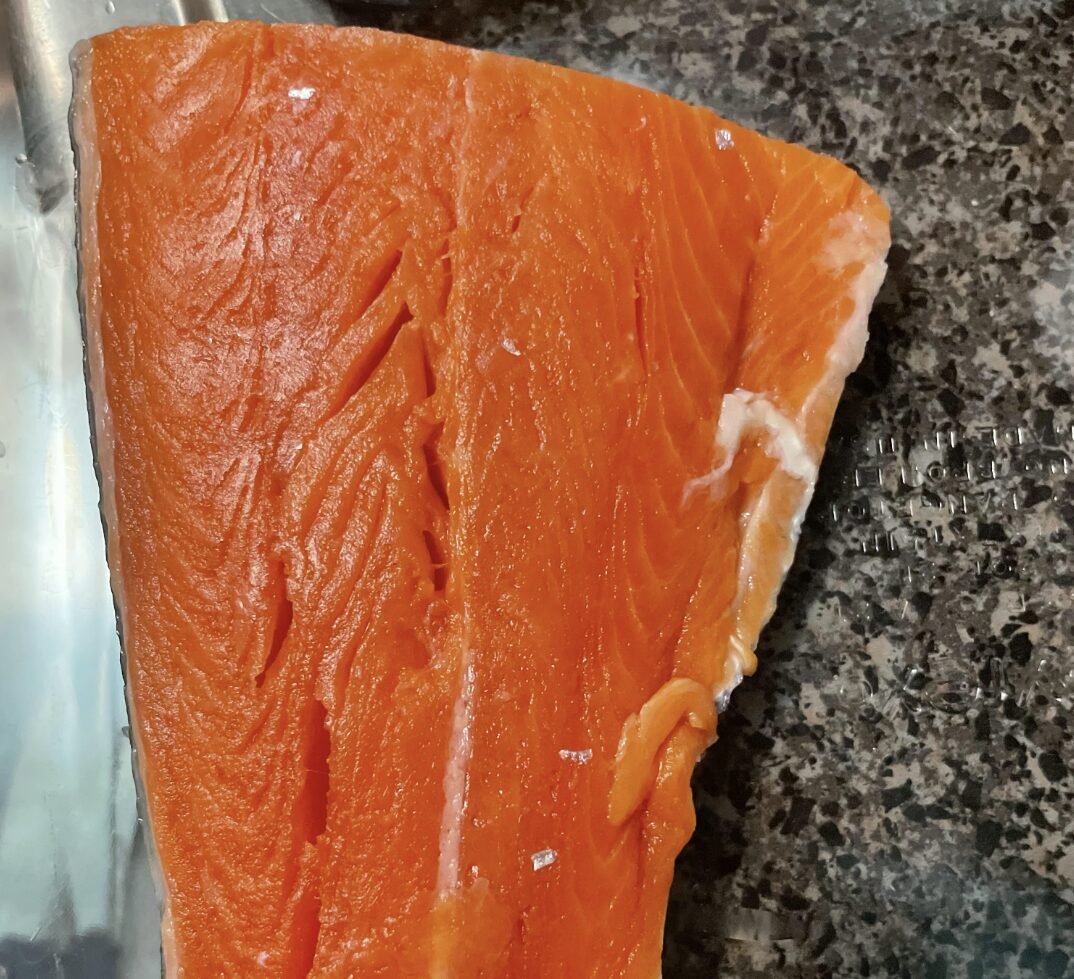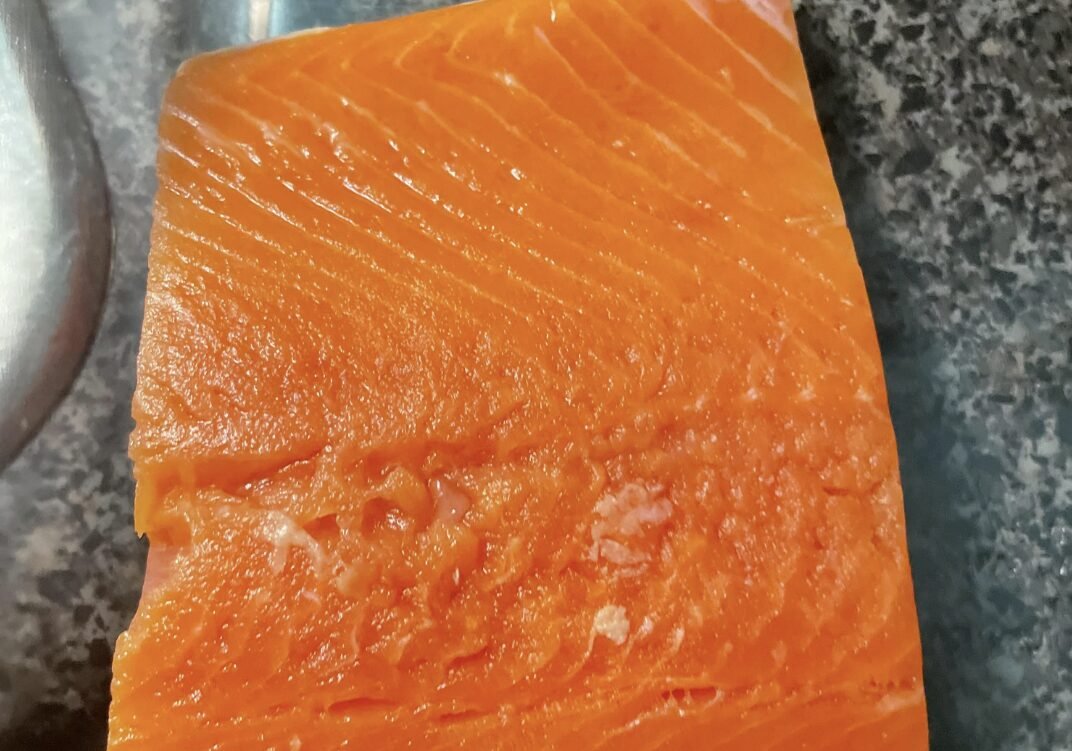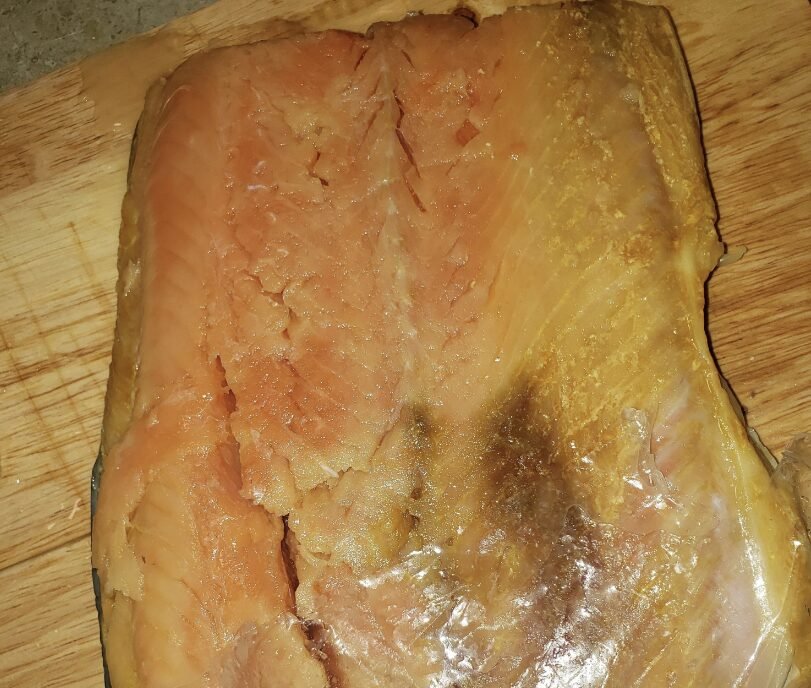This explains why the salmon you defrosted has yellow on it
Dealing with Yellow-Tinted Salmon: A Guideline A stunning discovery. My loved ones like salmon. It’s a regular in our weekly meals, whether grilled with lemon or slow-cooked in teriyaki glaze....

Dealing with Yellow-Tinted Salmon: A Guideline
A stunning discovery.
My loved ones like salmon. It’s a regular in our weekly meals, whether grilled with lemon or slow-cooked in teriyaki glaze. However, the other day, I thawed a beautiful fillet from the freezer and observed a strange yellowish hue on the flesh. I wondered, “What is this, and can we still eat it?”
Investigating the Yellow Tint.

At first, I panicked. Salmon usually has a beautiful pink hue, so the yellow patch was concerning. I began retracing my steps to see whether I had done something incorrectly. Had it been in the freezer too long? Was it saved improperly? Did something bad happen without my knowledge?
Being familiar with Fish Extra Fat
Soon after researching seafood safety, I realized that a yellow tint on defrosted salmon is not necessary cause for concern. The yellowish color is usually caused by oxidized body fat. Salmon, which is plainly fatty, can have its fat oxidize and change color if frozen for an extended period of time or stored poorly. This oxidation does not mean the salmon is hazardous to eat. It is much more about the superior quality and appearance. Check the fish for signs of deterioration, such as a sour smell, slimy texture, or unpleasant flavor.
Incorrect Packaging and Freezer Melt away!
Freezer burnup can also cause discolouration. If the salmon is not well wrapped in the freezer, it may shed moisture and develop yellow or white spots. Although sad, it does not mean the end of the world. Trim the affected area, and the remaining salmon is usually of great quality for cooking and eating.

Organic Variations.
Some salmon species, particularly those taken in the wild, have a yellowish belly. Their diet, which includes crustaceans and algae, may contain pigments that influence flesh color. Because of their controlled diet, farm-elevated salmon typically have much more consistent color, but variations can still occur. So, your salmon’s yellow tint could simply be a natural variation.
Strategies to Stop Yellow Tint

- Seal Correctly: Make certain your salmon is airtight just before freezing. Vacuum-sealed packaging is effective best, but plastic wrap and a freezer bag also assistance.
- Label and Day: Mark when you froze the salmon to keep track of how very long it is been there. The USDA suggests consuming frozen fish in 3 to 8 months for the ideal top quality.
- Rotate Stock: If you invest in salmon in bulk, use the more mature fillets first, subsequent a “first in, first out” mentality.

Conclusion
In the end, my yellow-colored salmon worked out well. I cooked it to perfection and served it alongside garlic asparagus. The relatives could not explain the distinction. It was still juicy and wonderful.
So, if you notice your defrosted salmon has a golden color next time, don’t panic out! Perform a brief fragrance test, remove the discolored section if required, then proceed with your preferred salmon recipe. Most likely, it will continue to be the delicious, nutrient-dense fish you enjoy, but with a little more character.
